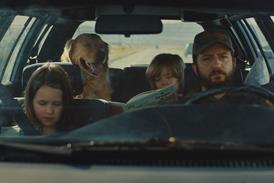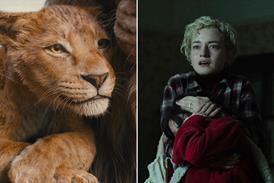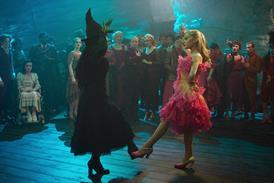Bollywood's global reach has expanded rapidly in recent years with the development of solid theatrical markets across disparate territories. This expansion, combined with a range of demographics that now includes non-Indian audiences, means that international Bollywood and Indian film marketers need to be on the cutting edge.
'The trend is now global rights. Film-makers are not interested in dealing with a different company in India, the UK, the US and so on. They want a one-stop shop that can market and distribute their films around the world,' says Jyoti Deshpande, COO of Eros International. The company is one of Bollywood's major international players - alongside Yash Raj Films, Studio 18, UTV and Adlabs - handling the lion's share of Bollywood and Indian film releases in key territories including the US, the UK, South Africa, the United Arab Emirates and the Gulf.
As a result, tailoring marketing campaigns for each film to suit these disparate markets has become a key focus, as has an awareness of the most effective media in each territory.
Deshpande points out, for example, the contrast between marketing methods for Bollywood and Indian films in the UK and in the US: 'You can target your marketing very well in the UK because of the way the audiences are located. But the cable market in the US has localised cable channels and programmes that are targeting the Indian diaspora, and it is the same with radio. It is more local as opposed to national. As a result you often work with several different players in the US who are in PR and marketing.'
Despite efforts on both sides of the Atlantic, 'the reality is that 95% of our audience is still Asian', says Tanuj Garg, Studio 18 International Motion Pictures' head of operations for the UK and Europe. As a result, campaigns are still targeted squarely at Indian audiences. 'Everyone is aware of Bollywood and its growing momentum,' he continues. '(But) it is not cost-effective for us to use mainstream media and advertise the film if we aren't going to get proportionate returns.'
'It makes no sense to pitch a traditional Bollywood film, like Shaad Ali's Dance Baby Dance, to a non-Indian audience through mainstream media (in these territories),' says Avtar Panesar, Yash Raj Films' head of operations in the UK.
Star power
Nevertheless, Bollywood film-making is increasingly aimed at an international audience, and marketing budgets are reaching as high as the $1m mark in the UK alone.
'Bollywood film-makers realise the overseas market is lucrative, and with this international vision, marketing budgets will inevitably increase,' says Teji Singh, director of Sterling Media, a London-based PR company that has worked on a range of Bollywood projects.
In the UK, the key marketing media for Bollywood releases are TV and radio. 'They are perfect because Bollywood films are such a visual/audio medium,' says Panesar.
Poster campaigns, meanwhile, are 'no longer a cost-effective means of promoting our films', says Studio 18's Garg. 'You give out about 1,000 posters and maybe only 200 or 300 go up. There's no way of monitoring them.'
Panesar agrees: 'There is no control and so we can't say, 'Put up our posters today and keep them there for another two weeks.''
Instead, PR is becoming more prevalent in the UK, just as it is in the US. 'We get Bollywood films reviewed in Time Out, The Guardian, The Times, all the mainstream newspapers,' says Eros's Deshpande.
The importance of stars in the Bollywood market is paramount. Many campaigns will involve the film's leading cast members visiting the market and appearing on television. For the August 10 UK release of Chak De! India, Yash Raj incorporated interviews with actor Shahrukh Khan at the start of each TV ad. 'There are 10 other promos playing each day,' says Panesar. 'So when the audience member is in the kitchen and they just hear the film's song in the background, they won't be too fussed, but when they hear the film's star saying, 'This was my experience on the film,' they will make that trip back to the lounge to see them on television.' Chak De! India has so far taken $800,000 in the UK.
The internet is also growing in importance. 'We have a YouTube channel (youtube.com/erosentertainment) which we launched as an experiment a couple of months ago,' says Deshpande. 'We have already achieved two million page viewers.' The site offers trailers and clips of forthcoming films and allows people to blog and review films.
Adlabs Films is also using internet sites (including MSN.com) to promote its latest action film Cash, from director Anubhav Sinha, which has already made $7.5m at the international box office since its August 3 release.
'The internet is an amazing promotional tool, especially for the second- and third-generation Indians,' says Deshpande. 'They want to be more hands-on and involved in discussion threads.'
New media is particularly useful for the new breed of Indian films, such as Jag Mundhra's Provoked. The film, a true story of a Punjab woman's fight for justice in the UK after killing her abusive husband, was released in the UK in April. Eros spent over $200,000 on UK promotion, and made almost $1m at the box office.
'For Provoked we used the usual media - bus campaigns, TV, (Asian broadcaster) Sunrise Radio, press. But apart from that we also got the stars over. Because it was based on a real-life story we got the main protagonist, Kiranjit Ahluwalia, involved. She came along to the press conferences around the world and told people how you must stand up against injustice. Then the director of the film was available to talk about the film, and we premiered at Empire Leicester Square in London, which is quite rare for a Bollywood film,' says Deshpande.
Panesar agrees marketing strategies for such non-formula films have to be different to the Bollywood approach. 'In the next year or two we have a few non-formula films that will require completely new marketing strategies to appeal to the younger generation.'
Sterling's Singh insists: 'There is no such thing as a one-fits-all type of strategy. Films such as Gandhi, My Father and Provoked are prime examples of films that relate to audiences globally. For those films we tapped into social networks and forums on the internet. Online is the future.'
BOLLYWOOD IN FIGURES
- Bollywood is a $10bn industry slated to cross $50bn by 2015
- 3.1bn tickets a year are sold for Bollywood films
- UK marketing budgets can range from $100,000 to $1m
- The UK is the biggest market for Hindi films outside India - 2 million tickets sold in 2006





















No comments yet